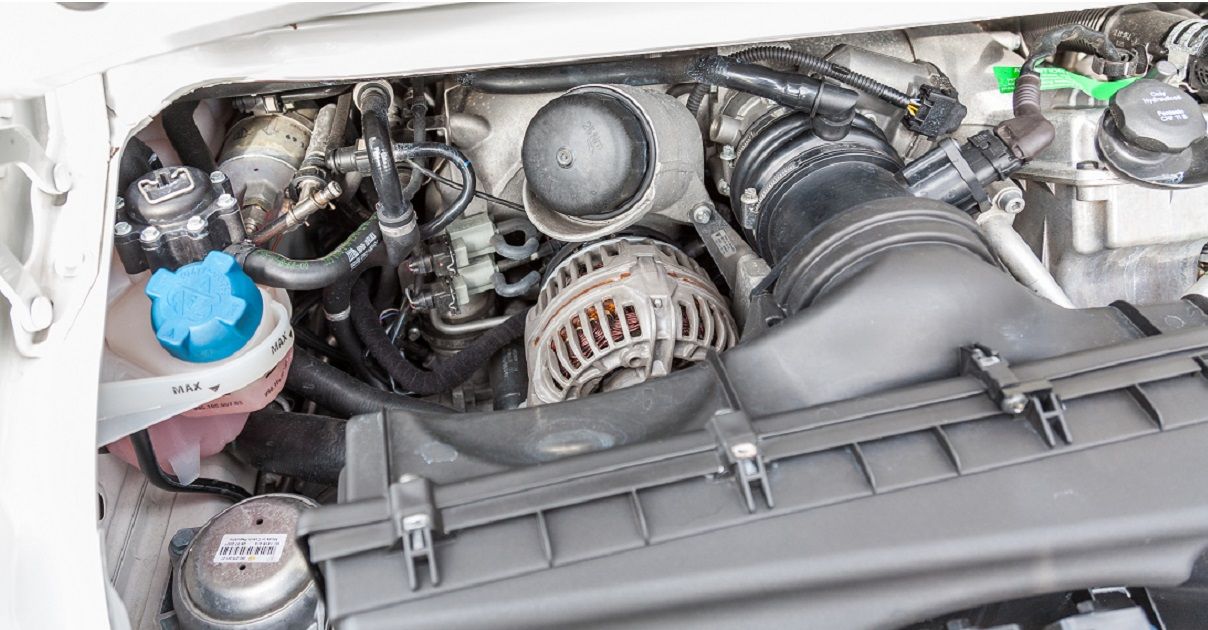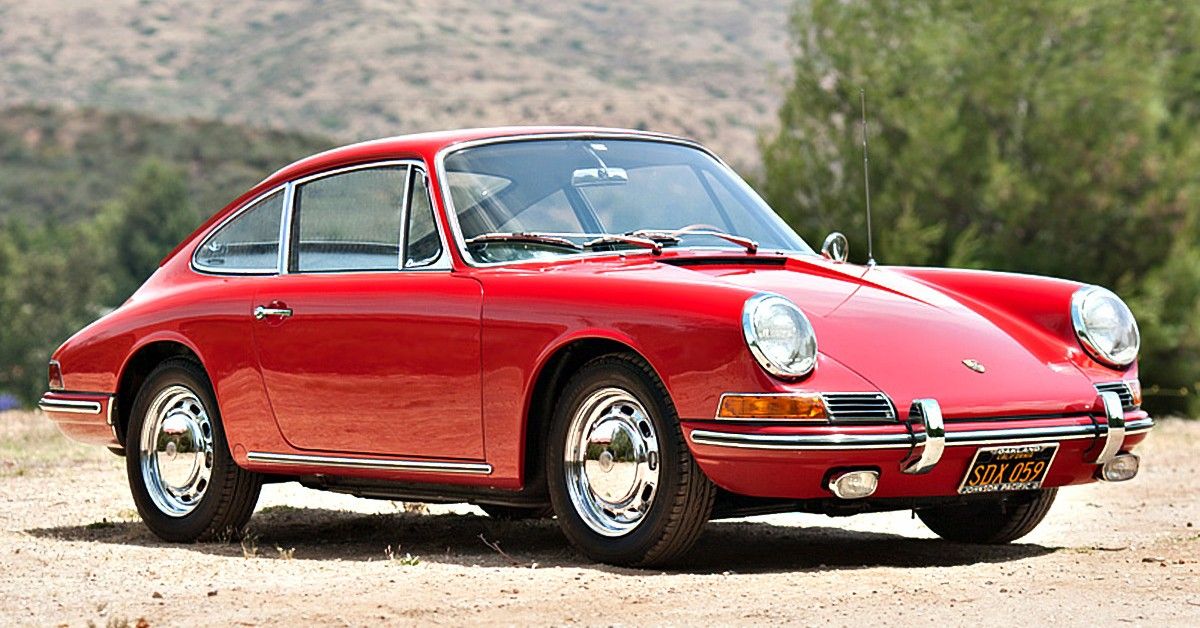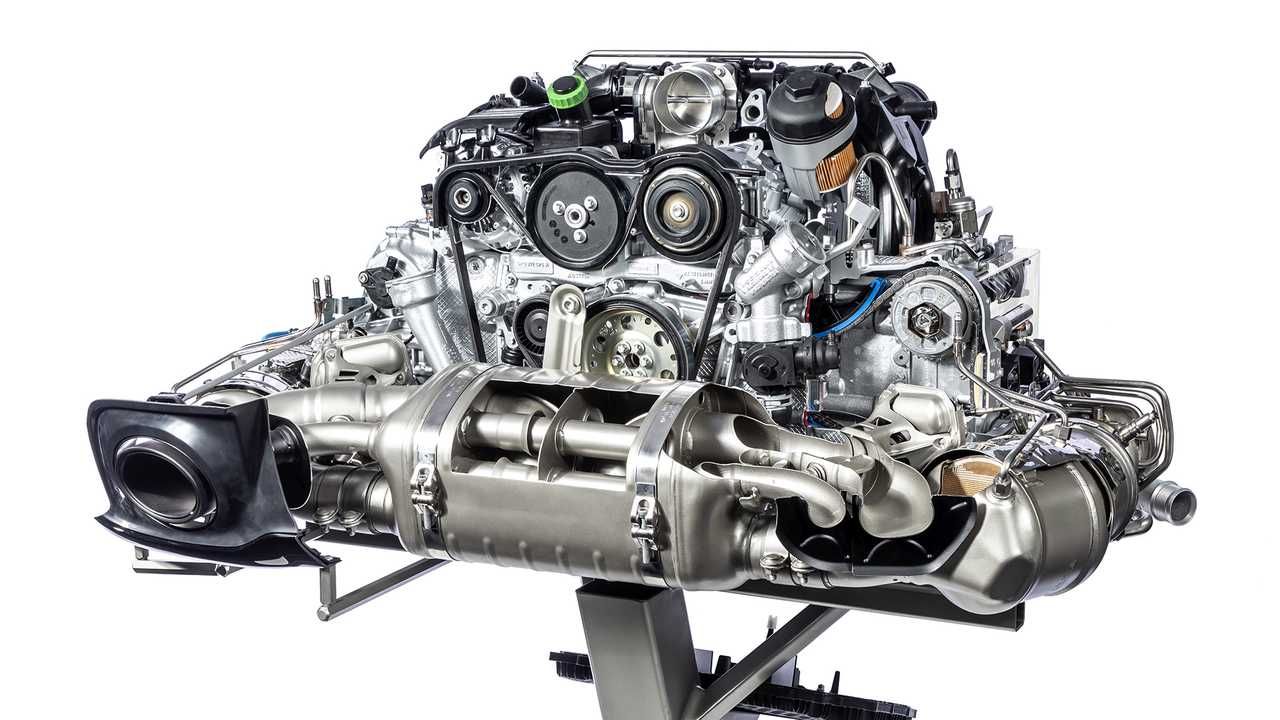Visit any racetrack for a weekend lapping session or a race, and you're bound to hear it. The raspy howl of the horizontally opposed six cylinders as they exit a corner, building revs along a straightaway until they pass at full song, calling to mind decades upon decades of Porsche racing heritage.
And if it happens to be a race, you're likely to see a Porsche 911 driver on one of the podium steps, further cementing the company's legacy as one of the top sports car manufacturers in the world.
In production since 1964, the Porsche flat-six engine design has been used in the 911 and other models continuously since that time. Over that span, it's gone through numerous revisions, including revolutionary turbocharging and the eventual switch from air cooling to liquid cooling. But one thing hasn't changed - 6 cylinders facing each other in a horizontal fashion, firing towards each other like a boxer's fists, hence the "boxer" nickname given to the design.
Porsche has made its name in endurance racing, with numerous Le Mans victories in a variety of classes using the horizontally opposed engine layout. Though some of their most iconic racecars like the 917 used up to 12 cylinders, arguably the most recognizable silhouette and cylinder count belongs to the 911, with its classic flat-six layout.
And just like those race victories borne out of endurance, so has the flat-six design endured. There are many steps in its evolution over the past 50 plus years, but more than anything, it seems to be what Porsche enthusiasts want. Let's explore what makes the Porsche flat-six engine unique and why it's stuck around for such a long time.
History Of The Porsche Flat-Six
The first flat engine was designed by Carl Benz in 1896 and produced five horsepower. The basic elements of the engine were pistons laying flat, firing horizontally towards each other from opposing sides of the crankshaft.
When Ferdinand Porsche was conceiving the initial Volkswagen Beetle, he turned to the flat engine design, which due to its compact nature, fit neatly in the rear section of the car. Using an air-cooled flat-4, there was no need for a heavy and complex liquid cooling system, making it an ideal choice for what became known as "The People's Car".
When Professor Porsche decided to pursue sports car manufacturing, he again decided to use a flat engine layout, lifting a 1.1-liter, 36 horsepower engine from the Beetle and fitting it into the first 356. This small, lightweight engine was the perfect companion to what would become a classic sporting machine and the first in a long line of hits for the company.
When the early '60s rolled aroun,d and the Porsche 911 debuted as a larger, more powerful alternative to the 356, again the company decided on a boxer engine. This time it used six cylinders and began a long line of memorable iterations as the years passed by.
Evolutions Over The Years
Porsche, never content to sit idly on successful engineering, continued development of the flat-six with each passing year. Work continued on the flat-six in the 911, as it incrementally increased in size and power without losing fuel efficiency.
At that moment in time, turbocharging was a new technology in the automotive world, and not many cars on the street used it. Using their experience on various racing machines like the 934 and 917/30, Porsche used a single turbocharger to significantly boost power of the regular 911 all the way up to 256 horsepower. Later on, in 1978, Porsche began using an intercooler to cool down intake air, resulting in another power bump to 300 horsepower. For a time, the 930 was one of the fastest street-legal cars in the world.
The flat-six design continued to prove itself through the '80s and '90s but when tightening emissions arrived, and higher power was needed, Porsche finally made the change to liquid cooling. The engine now ran quieter but was both more powerful and fuel-efficient.
Today, nearly all 911's are turbocharged but offer more instantaneous torque and still have the famous 911 flat-six sound. If you want a 911 that harkens back to the racing days of years gone by, the 911 GT3 with its naturally-aspirated, howling flat-six will take you there.
The Elements That Make It Special
Listen to a Porsche 911 drive-by, whatever production year it may be, and you'll understand why the car and its engine have such a loyal following. The earlier air-cooled versions sound like a rough symphony of mechanical noise, the volume and intensity increases as the car revs higher. The later liquid-cooled versions still have the magical flat-six whir but with a more refined chorus of parts making various sounds.
The flat-six engine has demonstrated its robust and versatile nature through the years, powering so many versions of the 911 and competing in races ranging from Le Mans to Paris Dakar. It's an engine that's scalable, tunable, and with continuous development, can meet almost any performance requirement.
Through its use in the 911 and other models like the Boxster and Cayman, Porsche has demonstrated the timeless nature of the flat-six engine. Now on a run of nearly 60 years during which it's been ever improved, the Porsche flat-six has stood the test of time through constant innovation and an exhilarating driving experience.



-.jpeg)
